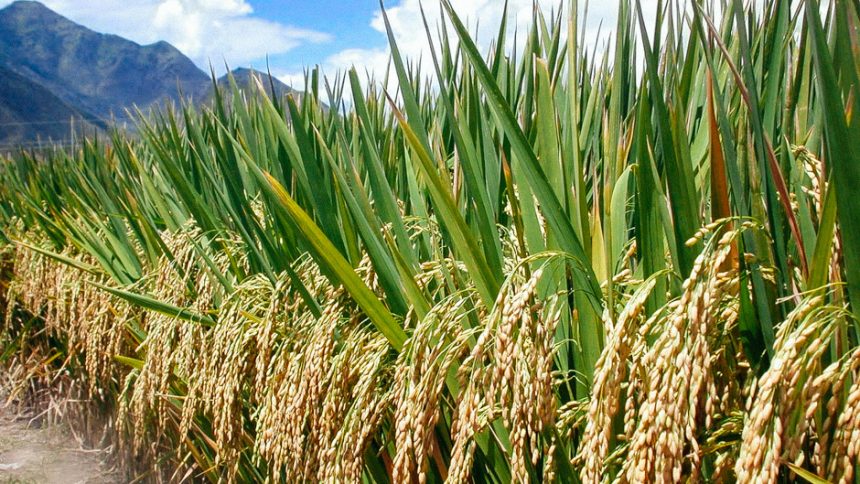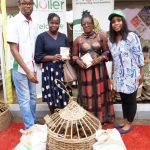A project funded by the African Development Bank (AfDB) and executed by the Sasakawa Africa Association (SAA) in Nigeria and Benin Republic has provided training to farmers in Nasarawa State on innovative technologies to enhance rice production and uphold soil fertility. Implemented under AfDB’s Policy and Human Resource Development Grant (PHRDG 1), the project addresses the challenges posed by climate change on food production. SAA, an international non-profit organization, spearheads this initiative. Godwin Atser, the Country Director of SAA, emphasized the importance of the project during the Field Days training in Lafia and Doma Local Government Areas of the state. Atser highlighted the project’s objective to acquaint farmers with new technologies and optimal agronomic practices in rice cultivation to boost yields and preserve soil health, ensuring sustainable nutrient retention over time. He also acknowledged the difficulty farmers face in predicting rainfall patterns due to climate change, which adversely affects their production.
Our project aims to demonstrate to farmers how they can achieve high yields from their rice fields and also how to enhance soil nutrients, ensuring sustainability for future generations. “If we are not careful, a time will come when the soil will lose its fertility, so we need to see how we can maintain the soil fertility,” he emphasized. By implementing these technologies and adopting best agronomic practices, farmers can reduce input costs, maximize profits, and mitigate the impact of climate change.
Additionally, Ibrahim Fagge, the Coordinator of Regenerative Agriculture at SAA, highlighted the introduction of various technologies to farmers, including the utilization of improved rice seed (Faro 66), the production of organic fertilizer from rice husk known as “Biochar,” and the creation of “Bokashi” from decomposed food waste. Fagge elaborated on Biochar, explaining that it is produced by heating rice husk in the absence of oxygen, and when incorporated into the soil during land preparation, it enhances texture, nutrient content, and water retention capacity.
He further stated that farmers received training on Biochar production, field preparation, and fertilizer application techniques. Fagge emphasized the project’s discouragement of broadcasting fertilizers in farms to mitigate greenhouse gas emissions and their impact on climate change. “Fertilizers, when broadcasted in the farm, release harmful chemical substances that contribute to ozone layer depletion. Therefore, farmers were instructed on Urea Deep Placement (UDP) under this project, where fertilizers are buried between rows of rice plants in the field,” he explained.
Furthermore, Idris Garko, Facilitator of the PHRDG 1, mentioned that the project is currently underway in seven communities spanning Doma and Lafia Local Government Areas of Nasarawa State.
Garko explained that farmers were instructed on how to prepare nursery beds for rice cultivation and then transplant the seedlings to their prepared fields after 15 days, spacing them in rows with a 20cm gap between plants. This method, he noted, significantly reduces rice seed wastage compared to the conventional practice of broadcasting.
Additionally, Garko emphasized the precision of fertiliser application through UDP, contrasting it with broadcasting, which could inadvertently fertilize weeds in the field.
Moreover, he highlighted the introduction of a technological device called “e-kakashi” by SAA. Placed in rice fields and linked to Android devices, this device monitors temperature, humidity, and water levels, aiding in efficient field management.
“This will assist farmers in regulating water flow into the fields and conducting other farm activities,” he stated. Garko elaborated that with the adoption of these technologies and improved seeds, farmers could achieve rice cultivation within 100 days, from nursery to harvest.
Yusuf Kuje from Alagye, Doma, Abdullahi Otsonu from Assakio, Lafia, and Bitrus Angbetun from Angwan Gambo, Lafia, expressed their gratitude to SAA for its intervention. They noted that the project had expanded their understanding of rice production, and they anticipated a bumper harvest from their farms.
Kuje mentioned that many farmers have approached him to learn and implement the technologies, impressed by the results they’ve witnessed on his farm.





